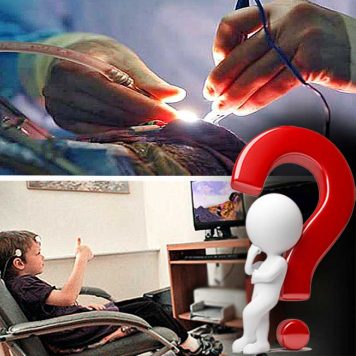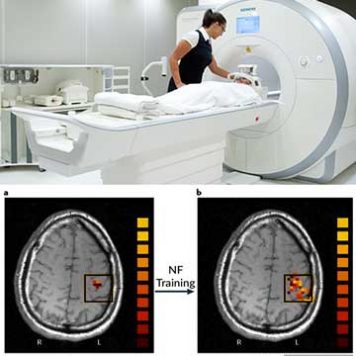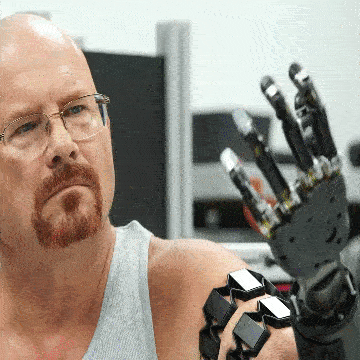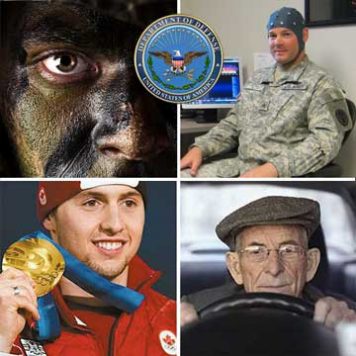After decades of clinical experience and countless favourable outcome studies, people usually do not doubt that Neurotherapy and Neurofeedback Training are effective ways to combat Functional Brain Disorders. What many struggle to understand is why it works.

These are the QEEG Brain-maps of one of our clients. He had been referred to us for a “psychiatric” condition which had rendered him unable to work or do anything else useful. As you can see for yourself, his initial Brain-maps show significant abnormal activity at almost every frequency.
Although not perfect, eleven months later his Brain presented almost normal, he was off all medication, free of symptoms and started a new job. His psychiatrist was gobsmacked and ended up attending workshops and buying a Neurofeedback system to train clients himself. True story.
This is the original symptom-severity-tracking chart of another client of ours, a 36 year-old mother of two. When she came to see us, she was not only highly anxious and depressed, but also had issues with sleep, concentration, emotional vulnerability and cognitive function. Bit of a mess, really.
In line with her suicidal thoughts, the initial evaluation showed high levels of helplessness/hopelessness. After only 19 sessions of Neurotherapy, her total symptom-severity score had dropped by 86%. A miracle? — Not really.


Brains and computers have in common that • they run on electricity • they have huge numbers of connections • their purpose is handling information and • they don’t always work perfectly — Bummer.
However, there are also substantial differences. Unlike computers, Brains are in a constant process of forming new and severing old connections. “Neurons that fire together wire together. Neurons that fire apart wire apart” is a brief summary of this concept known as Neuroplasticity. So, it was YOU!
Neuroplasticity has been a topic for popular TV science programs and best-sellings books in the last several years. It proves that the Brain has the ability to acquire, process and store information by forming and strengthening pathways and connections.
It’s puzzling that most children end up walking and talking without any detailed knowledge of Neuroplasticity. Perhaps they are born with the intuitive wisdom that Brains have the capability of learning.


In order to memorise 25,000 streets as well as countless pubs, hospitals, stations and other landmarks, the memory areas of London cab drivers increase substantially as shown in studies with MRI Brain scans.
In contrast, Functional Brain Disorders like PTSD or Chronic Migraine lead to a decrease in Grey matter volume. In simple words: Brain tissue adapts like a muscle: Function shapes structure.
While the discovery of Neuroplasticity has scientists all excited, it’s no real surprise for • parents • schoolteachers • university professors • language tutors • sports instructors • behavioural therapists • music coaches and • other educators who deal with teaching, learning and practice in order to gradually improve Brain function.
Allgedly, even beasts can learn and adapt to new challenges, as • animal trainers have now finally revealed to investigators under duress.


In fact, animals were instrumental in the discovery of the benefits of Neurofeedback Training: For sleep research and with the help of milk and broth, a group of 10 cats were trained to produce a specific type of EEG Brain rhythm, the Sensorimotor Rhythm (SMR).
Later, the 10 EEG-trained and 40 other cats were exposed to toxic rocket fuel fumes in tests for NASA. It turned out that the EEG training had doubled the 10 cats’ resistance against fume-induced epileptic seizures.
Today, EEG-Neurofeedback based Brain training is an effective therapy for human patients with intractable Epilepsy : When meds fail, Neurotherapy can still at least halve the fit rate in 80% of patients. Not too shabby, ey?
Parents of children with intractable epileptic seizures now face a difficult decision: Either • letting doctors cut parts of the Brain out (Neurosurgery) OR • Neurofeedback-based Brain training with EEG-sensors on the head in front of a telly. I reckon this is a no-Brainer!


Neurotherapy is probably best known as the right therapy for kids with Attention Disorders, Autism or Learning Difficulties. Sadly, many parents don’t know about it and allow doctors to “treat” these disorders — like diseases — with prescription drugs, of course. That’s all they have.
However, even the pharma-biased AAP (American Academy of Pediatrics) has finally recognised Neurofeedback Training as the scientifically best supported therapy for ADD/ADHD.
Well-funded universities are publishing an increasing number of studies about fMRI Neurofeedback Therapy, which is an awe-inspiring, yet very costly and uncomfortable way to get a 3-dimensional image of metabolic activity for Brain training.
These days, clinicians don’t have to clutter the garage of their home-based practice with a multi-million dollar fMRI scanner anymore, thanks to LoRETA (= “3-dimensional EEG”) for analysis and therapy.


When you and I move our hand and fingers, our Brain talks to our muscles via our peripheral Nervous System. In contrast, the amputee’s Brain send its commands to the bionic hand via a Brain-Computer Interface (BCI).
Apparently, it takes a lot of practice until the Brain can reliably operate this HiTech prosthesis. That’s different in Neurofeedback Therapy where the Brain — also connected via a BCI — is often quite quick to respond to the challenge set-up by the Neurotherapist. And you get to keep your hand!
The US Army utilises Neurotherapy for the rehabilitation of soldiers with PTSD or head injuries, but also with active personnel in conflict zones.
Athletes, surgeons, musicians, stockbrokers and others, whose time is money, use it to optimise their performance. And ageing Brains keep sharper with Neurotherapy.
So, why does Neurotherapy work? — Because it uses the powers that Brains already have anyway. Why wouldn’t ya?

Now,
you’re possibly
asking yourself:
Or perhaps
you’re dying to
find out …

THE MIGRAINE REVOLUTION is a Scientific Patient Guide about the comprehensive rehabilitation of Migraine, a Functional Brain Disorder.

Neurotherapy Practice
32 Lawley Crescent
Pacific Pines — Gold Coast
Queensland 4226
Australia